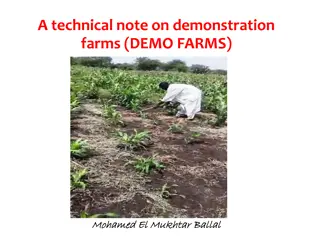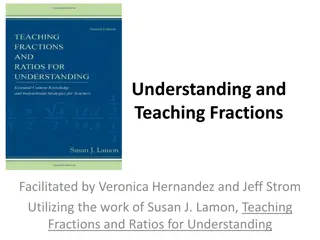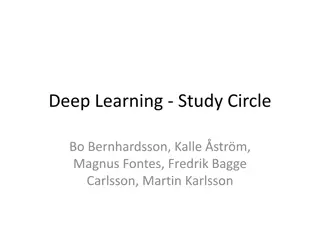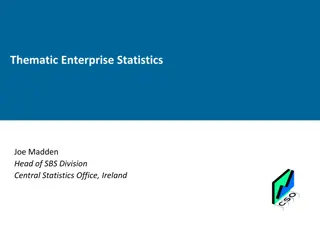
Updated NDFD Viewer Features and Enhancements
Explore the latest planned updates to the NDFD Statistics Viewer on AWS, including new sample matching options for different regions, improved verification types, and expanded query capabilities for enhanced forecasting accuracy.
Download Presentation

Please find below an Image/Link to download the presentation.
The content on the website is provided AS IS for your information and personal use only. It may not be sold, licensed, or shared on other websites without obtaining consent from the author. If you encounter any issues during the download, it is possible that the publisher has removed the file from their server.
You are allowed to download the files provided on this website for personal or commercial use, subject to the condition that they are used lawfully. All files are the property of their respective owners.
The content on the website is provided AS IS for your information and personal use only. It may not be sold, licensed, or shared on other websites without obtaining consent from the author.
E N D
Presentation Transcript
NDFD Statistics Viewer John Wagner & Dana Strom
Planned Updates to Viewer on AWS Current NDFD Sample Matching NDFD Blend/Blendx GMOS WPC (day 4-7) IssuanceT ime Model Cycle Available Time Model Cycle Available Time Model Cycle Available Time 00z 19z 20z 12z 18z 12z 16z 06z 01z 02z 12z 18z 00z 04z 12z 07z 08z 00z 06z 00z 04z 18z 13z 14z 00z 06z 12z 16z
Planned Updates to Viewer on AWS New NDFD Sample Matching - CONUS/Puerto Rico NDFD Blend/Blendx Early Blend/Blendx GMOS WPC (day 4-7) Issuance Time Model Cycle Available Time Model Cycle Available Time Model Cycle Available Time Model Cycle Available Time 00z 13z 14z 19z 20z 12z 18z 12z 16z 12z 01z 02z 07z 08z 00z 06z 00z 04z
Planned Updates to Viewer on AWS New NDFD Sample Matching - Alaska/Hawaii NDFD Blend/Blendx Early Blend/Blendx GMOS Issuance Time Model Cycle Available Time Model Cycle Available Time Model Cycle Available Time 06z 19z 20z 01z 02z 12z 18z 18z 07z 08z 13z 14z 00z 06z
Planned Updates to Viewer on AWS Four selectable Verification Types to support unique sample matching NDFD - NDFD/NBM/GMOS/WPC verification through 7 days QPFVS - QPF Verification Service Aviation (AFVT) - near-term hourly NDFD verification through 36 hours QPF CFP - Special QPF verification for Collaborated Forecast Process demo
Planned Updates to Viewer on AWS Entire period of record (April 2005-present) for NDFD Query by Blend version number (in addition to Blend, Blendx) Gridded scores for just land areas, just water areas, or both High Impact Verification for NDFD Scores specific to valid times when selected WWAs (e.g., winter weather) were in effect Additional elements QPF24 and Snow24 in QPF CFP RH/Apparent Temperature in NDFD NDFD, Blend, and GLMP wind speed/gust/direction, temp, dewp, sky cover to 36 hours in Aviation (AFVT) QPF01 - Blend, GFS, and HRRR to 36 hours in Aviation (AFVT) PoP01 - Blend and GLMP to 36 hours in Aviation (AFVT) 12-hr Max Wind Gust in NDFD Gridded Verification for the Guam and Oceanic domains
Known Issues Station PoP12 Probabilistic verification takes significantly longer to run in MET Solution that works for the 134 gridded masks (WFOs/regions/RFCs) does not work for 2600+ stations Gridded Monthly PoP12 Daily PoP12 brier scores are available Currently missing from Mar-Present due to an offset problem with WPC data We rely on unreliable sftp to move data from WCOSS to MDLnet Will no longer be an issue when viewer/db is in the cloud
Data Usage Sufficient Data for Contingency Table Scores (Heidke Skill Score, Critical Success Index, Probability of Detection, False Alarm Ratio, etc) Looking at small samples of data for these scores can produce unexpected results. If thresholds are not exceeded, no results will be displayed. We recommend selecting at least 30 days of data when looking at these scores Blendx Blend V4.1 started on May 20, 2021 Blend V4.0 spans February through September 2020 Blend V3.2 spans October 2019 through January 2020 Quality Control QC for gridded data currently using common sense thresholds and known issues that we have encountered. If you encounter data that you believe incorrectly got through our QC process, please let us know via VLab/slack.
More information about MET DTC Homepage MET V9.1 Users Guide Existing builds on NOAA Machines
NDFD Statistics Viewer NDFD Statistics Viewer https://veritas.mdl.nws.noaa.gov/ndfd-stats/comparative/verification.php VLab Community https://vlab.ncep.noaa.gov/group/mdl-forecast-evaluation Slack https://noaa-mdl.slack.com/archives/C01AC41QVFC QPFVS https://veritas.mdl.nws.noaa.gov/qpfvs/verification.php
NDFD Statistics Using MOS-2000 Gridded and station verification for months only Relied on monthly station obs file from the Statistical Modeling Division Run after the 15th of the following month 63-step process to run the verification Plots and tables available to users limited to monthly averages Station data limited to WFO averages
NDFD Statistics Using Model Evaluation Tools (MET) Hourly verification 7 day delay for QPF and PoP - to get final URMA grid with RFC updates 1 day delay for other elements Quality control station data using the Community Atmospheric Modeling Post- processing System (CAMPS) Data is ingested nightly into the database Currently automated using crons. Upgrade to rocoto as job scheduler coming soon. New viewer allows users to verify custom ranges for grids Monthly station verification can be plotted for an individual station Monthly station and gridded verification still runs around the 15th of the following month, when all necessary obs are available
How MET Differs From MOS-2000 Grib2/netCDF files instead of TDLPack Run for a single model/element/projection Case and Gridpoint matching done externally Data must be preprocessed for thresholds MET is not optimized to run on a supercomputer Using MET ensures consistency of scores among users
Known Issues Station PoP12 Probabilistic verification takes significantly longer to run in MET Solution that works for the 134 gridded masks (WFOs/regions/RFCs) does not work for 2600+ stations Gridded Monthly PoP12 Daily PoP12 brier scores are available Currently missing from Mar-Present due to an offset problem with WPC data Station MaxT/MinT Working through issue with CAMPS QC process
Known Issues Station Verification for Guam Currently working through issues with data for Guam Station Sky Cover Obs Require Satellite Data SCE/SCW data was down for Feb-Oct 2020 Offsets off for WPC cl/dp/mx/mn/po/ws/wd for Feb 26-May 10 We rely on unreliable sftp to move data from WCOSS to MDLnet This is no longer expected to be an issue after the db/viewer is in the cloud
Feb 24 - Data missing for all dates means missing data or data failed QC check Feb 26-27 - Missing Blend data means that we likely had an sftp issue. Please let us know when you see this.
Score Groups - CNT Continuous Scores (CNT) Mean Absolute Error (MAE) - measures accuracy of a forecast Perfect Score: 0 Bias - indicates whether a forecast is too high or too low in predicting a certain parameter. Also known as Mean Error (ME). Perfect Score: 0 Root Mean Square Error (RMSE) - measures the accuracy of a forecast. Since the mean is computed of the square error, more emphasis is placed on larger errors. Perfect Score: 0
Score Group - CTS/CTC Contingency Table Scores (CTS) and Contingency Table Counts (CTC) Critical Success Index (CSI) - ratio of the number of times the event was correctly forecasted to occur to the number of times it was either forecasted or occurred. Also known as the Threat Score. Perfect Score: 1 Probability of Detection (POD) - the fraction of events that were correctly forecasted to occur. Also known as the hit rate. Perfect Score: 1 False Alarm Ratio (FAR) - the proportion of forecasts of the event occurring for which the event did not occur. Perfect Score: 0 Gilbert Skill Score (GSS) - the CSI, corrected for the number of hits that would be expected by chance. Also known as the Equitable Threat Score. Perfect Score: 1
Score Group - CTS/CTC Contingency Table Scores (CTS) and Contingency Table Counts (CTC) Heidke Skill Score (HSS) - skill score based on Accuracy, where the Accuracy is corrected by the number of correct forecasts that would be expected by chance. Perfect Score: 1 Frequency Bias - the ratio of the total number of forecasts of an event to the total number of observations of the event. A good value of Frequency Bias is close to 1; a value greater than 1 indicates the event was forecasted too frequently and a value less than 1 indicates the event was not forecasted frequently enough. Perfect Score: 1 Percent Correct - Ratio of forecasted events to the total number of events. Perfect Score: 100
Score Group - PSTD/PCT Probabilistic Statistics for Dichotomous Outcome (PSTD) and Probabilistic Contingency Table (PCT) Brier Score (BS) - Mean squared probability error Perfect Score: 0 Reliability Plot - Ratio of times an event was forecast to occur versus how often it occurred. Perfect Score: Diagonal line





















